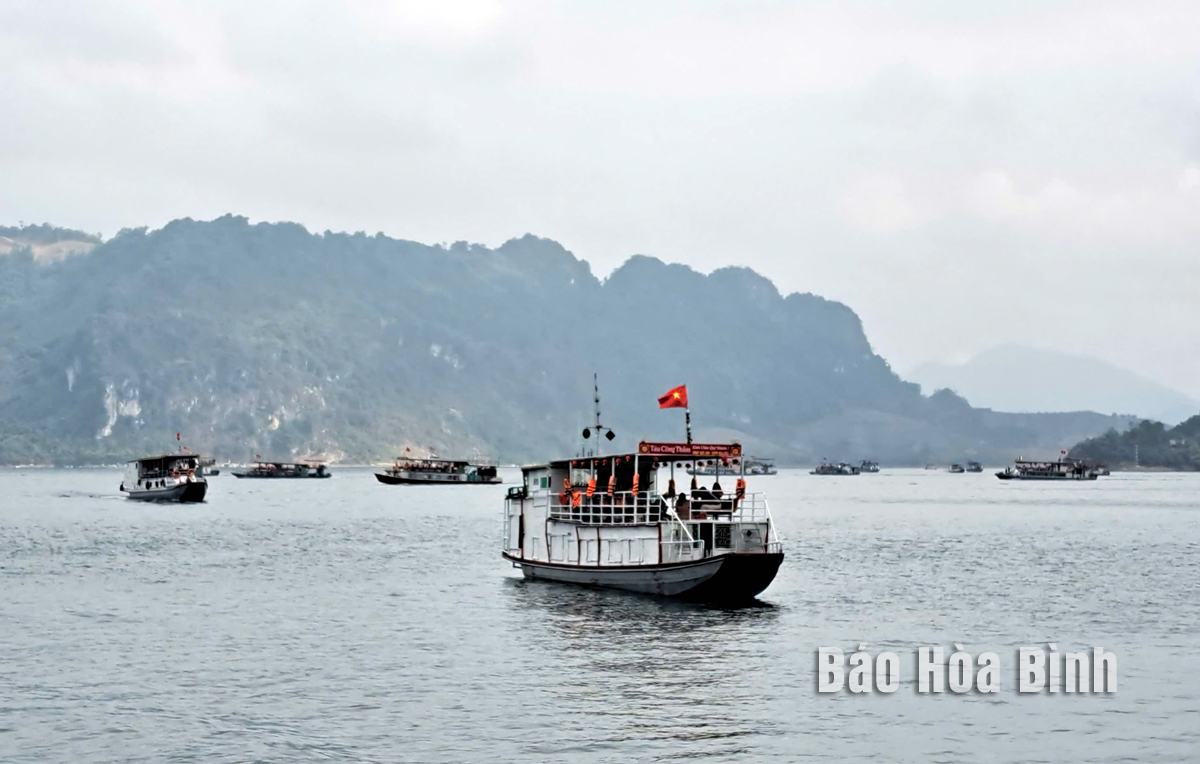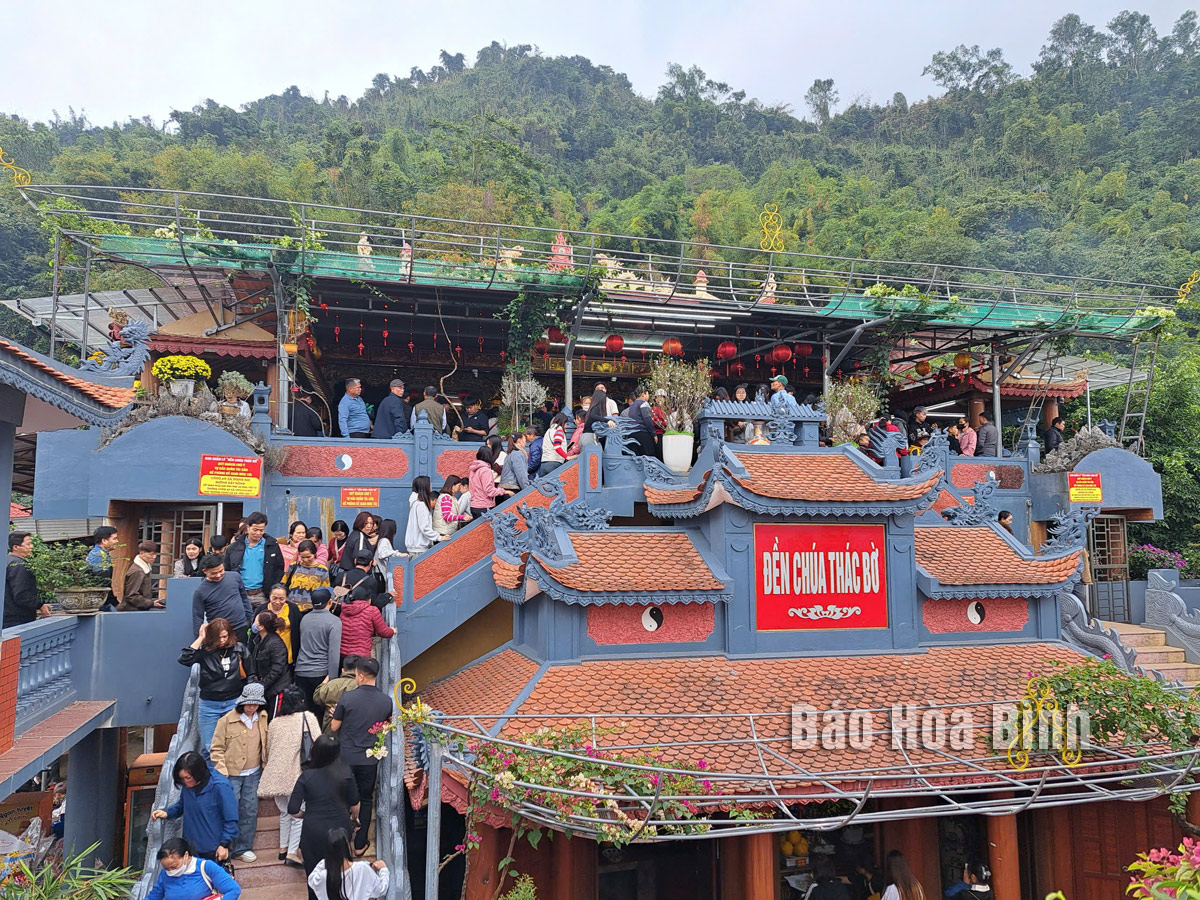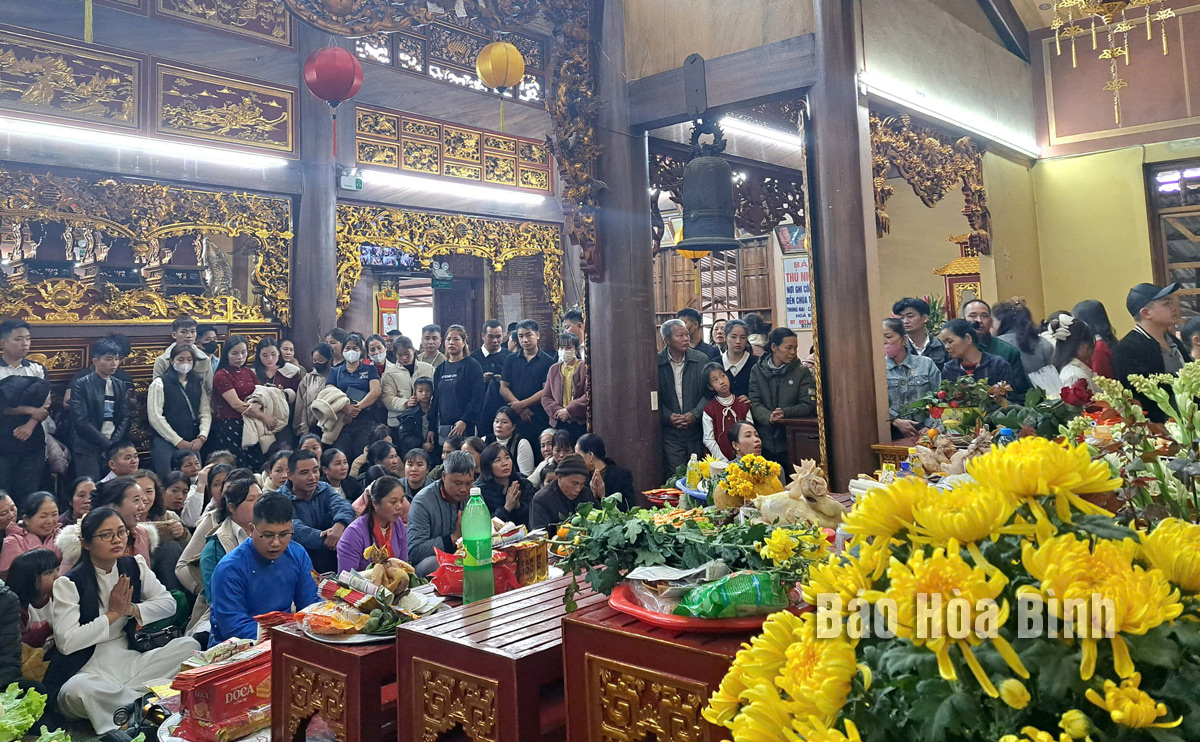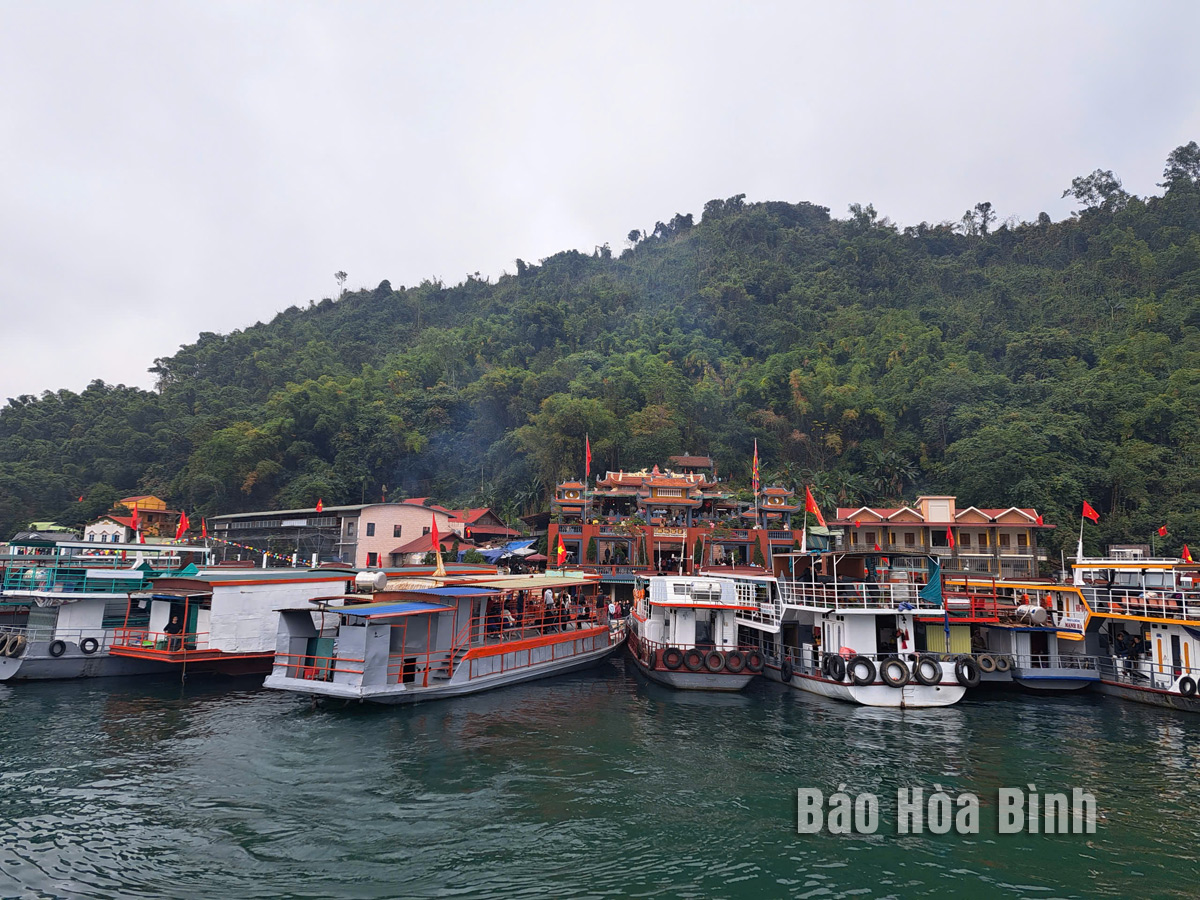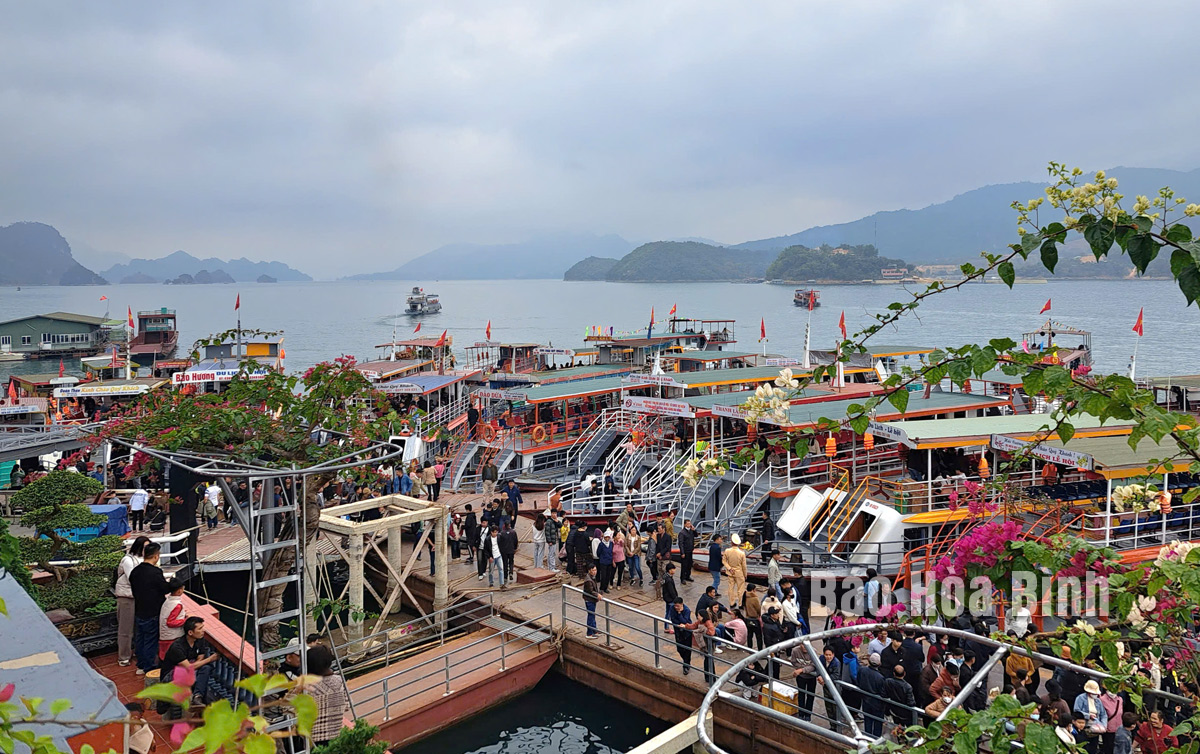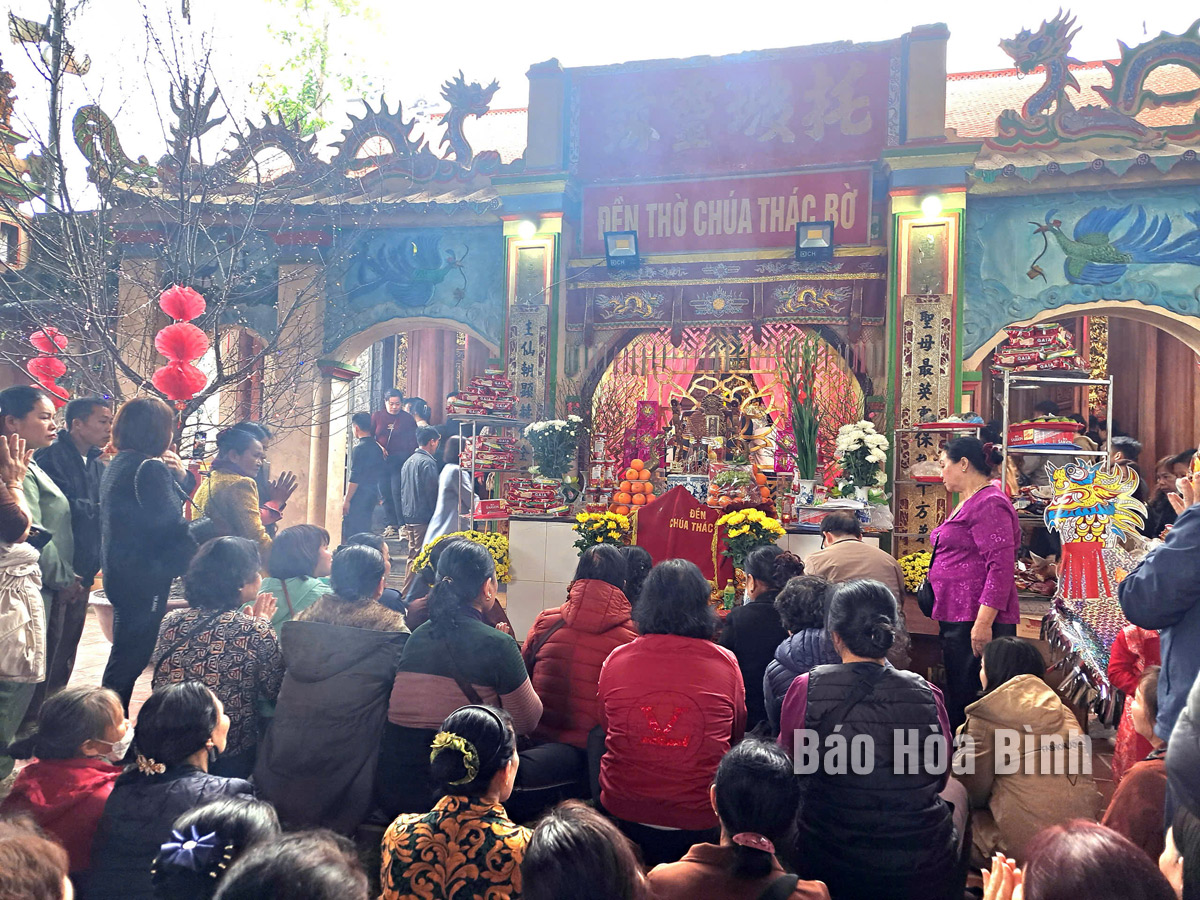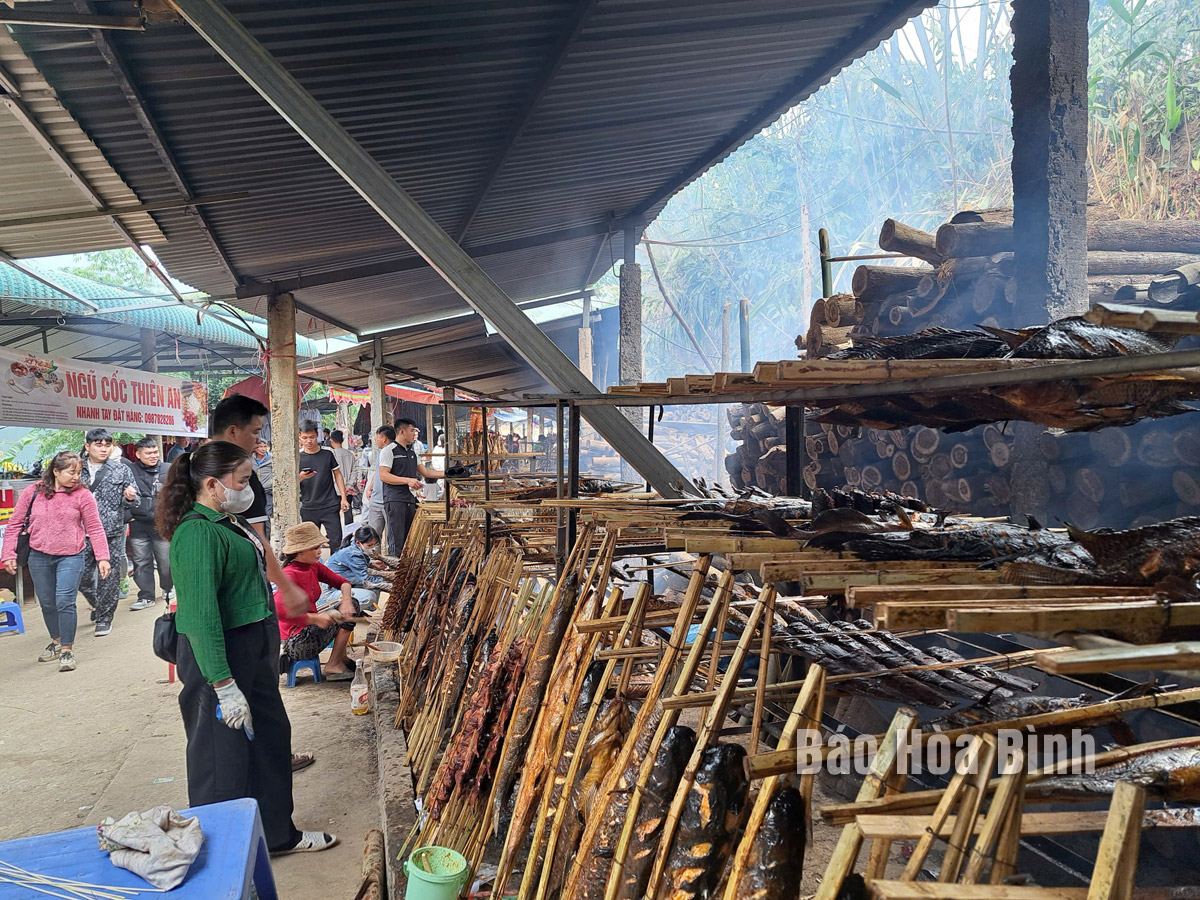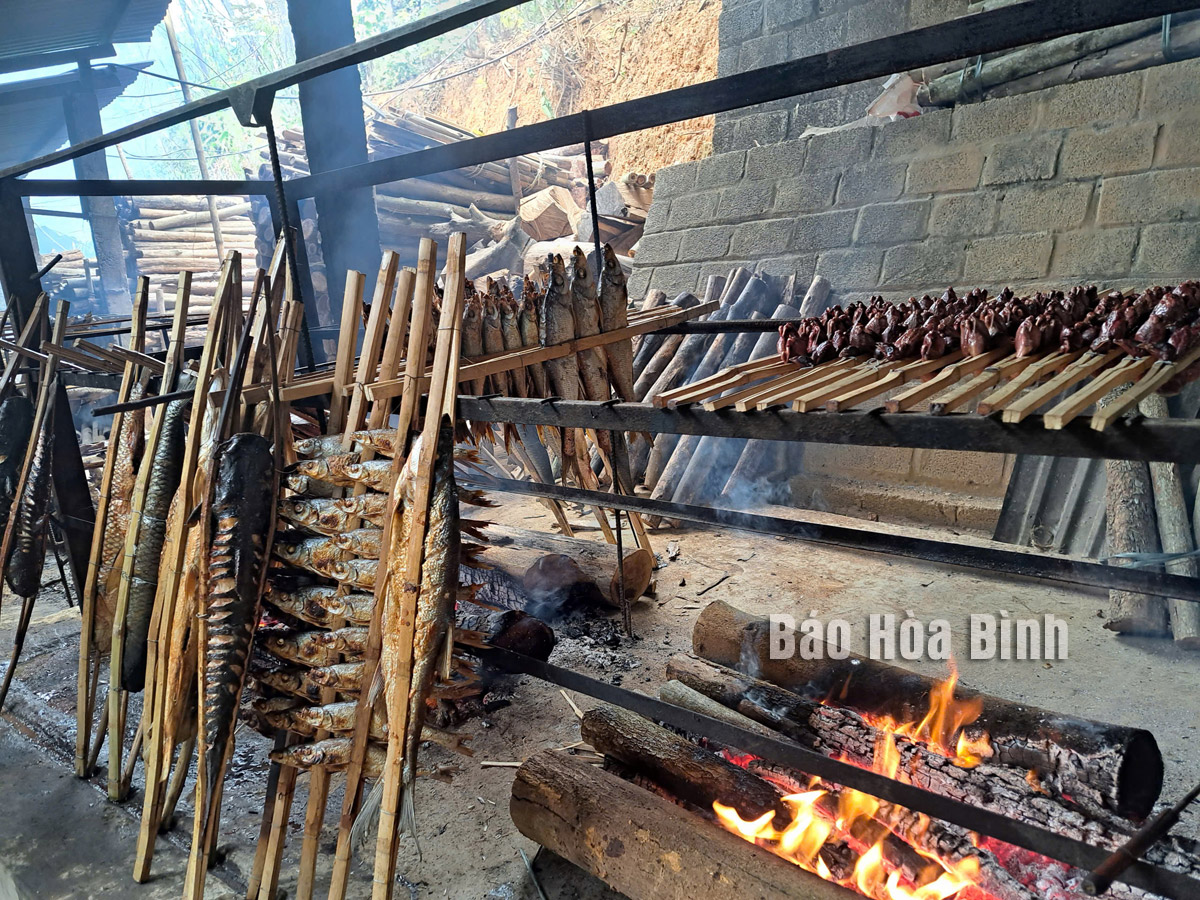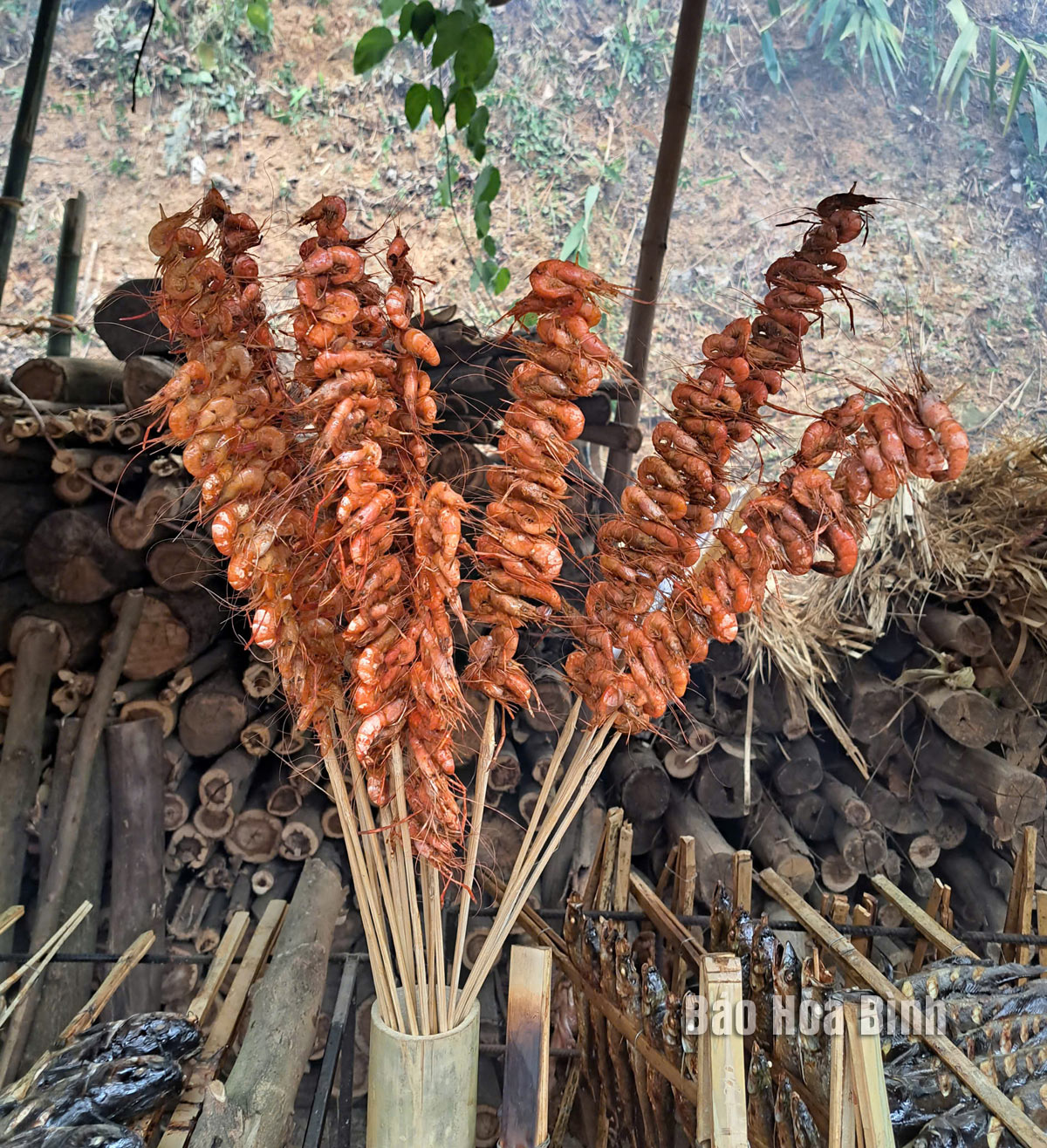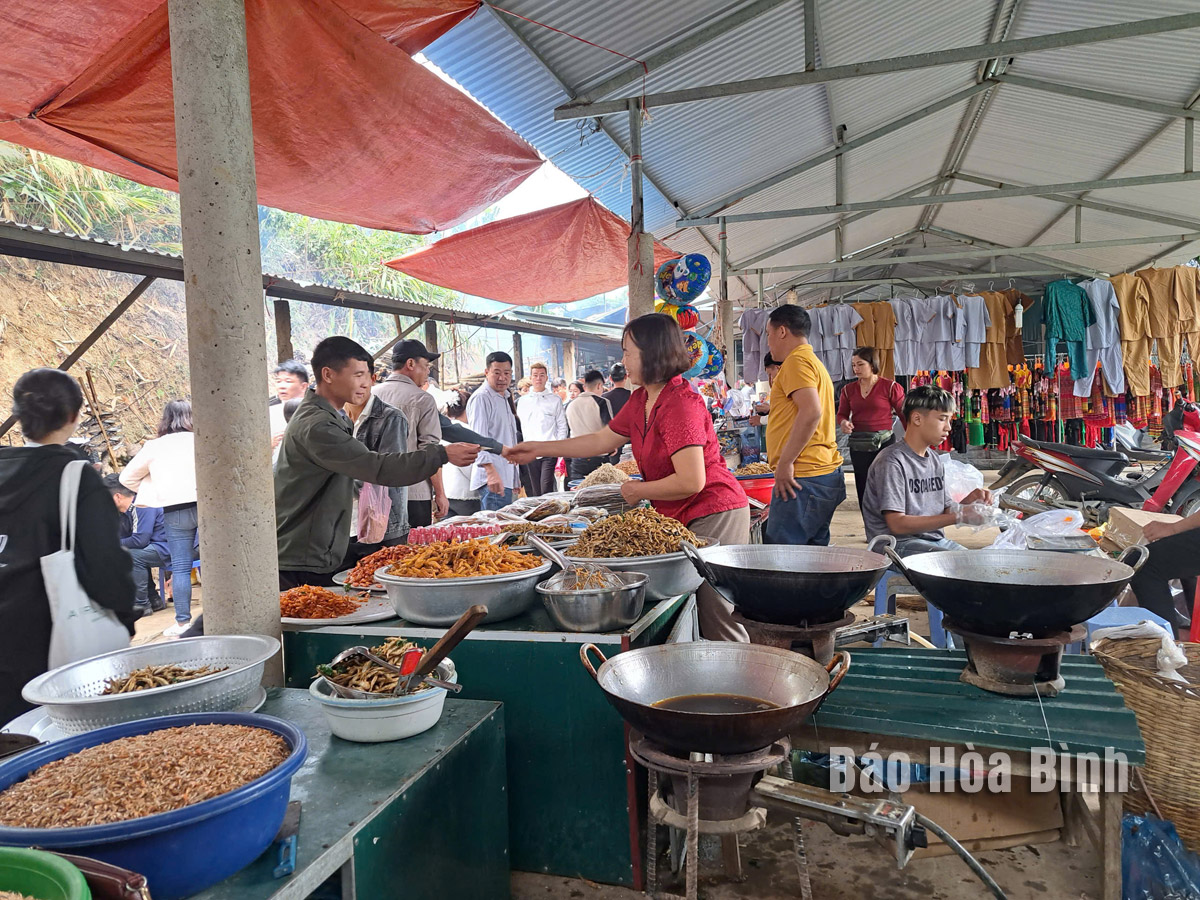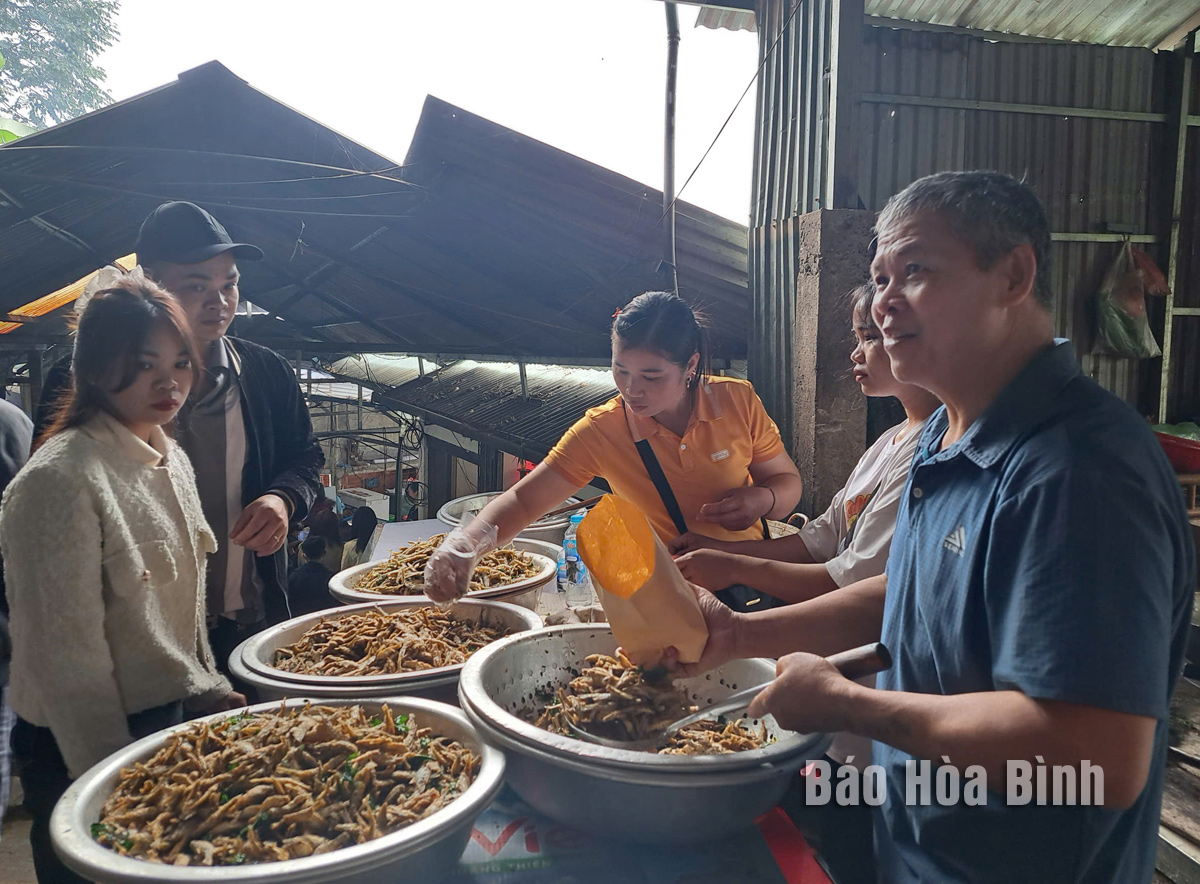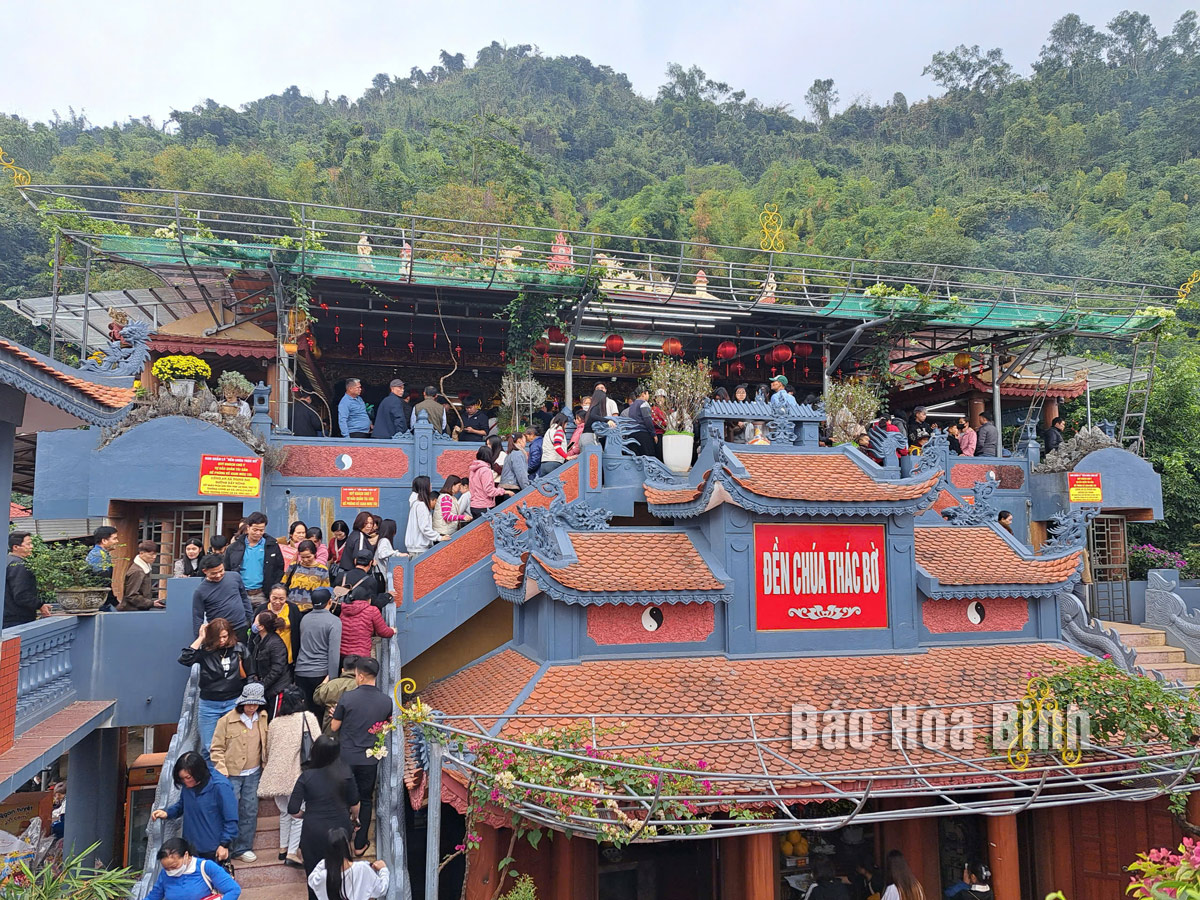
Thac Bo Temple is located in the tourism area of Hoa Binh Lake and it is a famous spiritual and cultural tourism destination. The majestic and poetic beauty of the place known as "Ha Long Bay” on land, along with the cultural identity of Muong, Dao, and Tay ethnic groups and the sacredness of the relic site has become an unmissable destination for many people in the province and tourists from all over the country whenever Tet and Spring appear.
At Ty Spring Festival in 2025, Thac Bo Temple has been
carefully prepared by all the functional sectors and levels, the local Party
committees and authorities from the facilities, landscape decoration, security
and order plans, fire prevention, food safety management, environmental
sanitation, etc. to help visitors have a safe and joyful spring trip. Starting
from the 2nd day of Tet, this famous spiritual tourism destination is always
crowded with visitors coming to visit, worship, and pray for a year of peace,
fortune, and luck.
On Hoa Binh Lake, boats connecting boats carrying visitors
for spring travel.
Thac Bo Temple in Thung Nai Commune (Cao Phong) welcomes
thousands of people to worship every day.
Sincerely praying for a peaceful and lucky year.
Although there are many boats, the work of ensuring security,
order, and safety of waterway traffic is well implemented.
Thac Bo Temple in Vay Nua Commune (Da Bac) is a spiritual
place that is not to be missed.
The majestic beauty of Thac Bo Cave has been attracting
tourists.
Along with sightseeing and worshiping, the grilled fish from
Da River is considered a specialty of Hoa Binh Lake that cannot be missed.
The fish and shrimp of Da River are always attractive to
diners.
The crispy, fragrant fried fish is always enjoyed by tourists
during their spring trip and they do not forget to buy it as a gift.
In the last historic days of April, blending with the joyful atmosphere of the whole country, on the streets of Hoa Binh City, flags, banners and slogans are brilliantly decorated to celebrate the 50th Anniversary of Southern Liberation and National Reunification. Here are the records from Hoa Binh newspaper’s reporters:
Nestled halfway up the mountains in Cao Son commune, Da Bac district, Sung village appears like a picture preserved intact through generations. With a history of over 300 years, the village is home to nearly 100 households of Dao Tien ethnic group – the people who still maintain their distinctive characteristics in housing architecture, clothing, customs and traditional crafts. The village is drawing increasing interest and exploration from both domestic and international tourists, as every visit becomes a cultural journey to experience the authenticity, friendliness, and hospitality of this highland region.
This Spring, more than 1,000 phoenix trees in Thang Hamlet, Thach Yen Commune (Cao Phong) have bloomed brilliantly, quickly spreading on social media. The picturesque beauty of the flower garden has attracted the participation of many people to admire and take photos.
This belief is both a guiding principle and a lifelong ambition for Sa Van Cam, a member of the Tay ethnic group in Da Bac district and a passionate advocate for the Tay culture. The native has devoted years to the revival, preservation, and teaching of the ancient Tay script.
Located just 25 km from Hoa Binh city and approximately 100km from Hanoi, with a journey of around 1 hour 45 minutes, Ngoi Hoa ecotourism site (PriorBay Resort) in Suoi Hoa commune, Tan Lac district, is a stunning peninsula retreat, and a standout destination within the Hoa Binh Reservoir tourism area. Officially opening in February this year, the resort captivates visitors with its distinctive vacation products and a range of exciting adventure experiences.
Over 1,500 women paraded in traditional ao dai (long dress) at Hoa Binh Square on March 5 to mark Ao Dai Week 2025 launched by the Vietnam Women's Union. Organised by the provincial Women’s Union in collaboration with the city’s chapter, the annual event features lively folk dance performances and a colorful parade that celebrated the beauty of Vietnam’s traditional dress and its rich cultural heritage.



